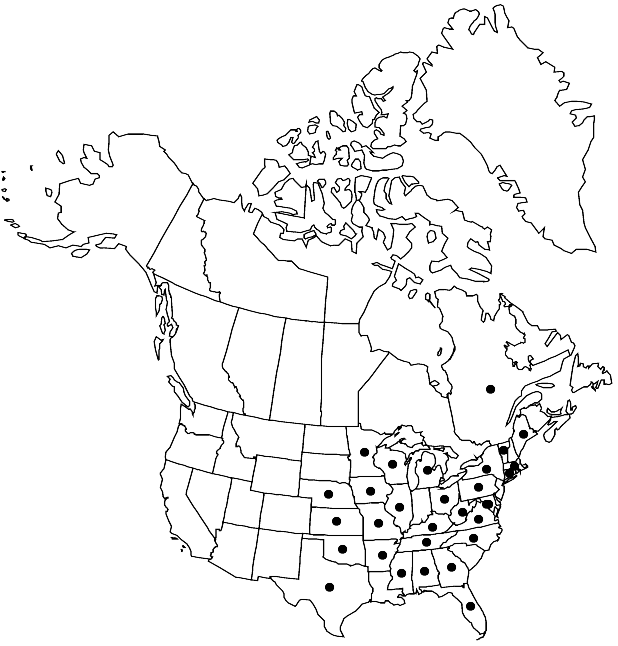Boechera canadensis
Novon 13: 384. 2003.
Biennials; short-lived; sexual; caudex not evident. Stems 1 per plant, arising from center of rosette near ground surface, 2.5–10 (–12.5) dm, sparsely to densely pubescent proximally, trichomes simple, to 1 mm, glabrous or sparsely pubescent distally. Basal leaves: blade obovate to oblanceolate, 10–30 mm wide, margins dentate, ciliate proximally, trichomes simple, to 1 mm, surfaces moderately pubescent, trichomes simple, 0.5–1.5 mm, these mixed with smaller, 2-rayed or 3-rayed ones. Cauline leaves: 12–20, often concealing stem proximally; blade auricles absent or proximalmost blades with auricles 0.5–2 (–5) mm, surfaces of distalmost leaves sparsely pubescent. Racemes 15–65 (–82) -flowered, sometimes branched. Fruiting pedicels descending to horizontal, usually curved, rarely straight, 6–13 (–17) mm, pubescent or glabrous, trichomes subappressed, usually 2-rayed. Flowers divaricate-ascending to horizontal at anthesis; sepals pubescent; petals white, 3–5 × 0.7–1.2 mm, glabrous; pollen ellipsoid. Fruits pendent to horizontal, not appressed to rachis, often secund, curved, edges parallel, 4–10 cm × 2.5–4 mm; valves glabrous; ovules 40–62 per ovary; style 0.3–0.8 (–1.1) mm. Seeds uniseriate, 1.7–3.5 × 1.5–2.2 mm; wing continuous, 0.4–1 mm wide distally. 2n = 14.
Phenology: Flowering Apr–Jul.
Habitat: Bluffs, rocky slopes, ravines, open woods
Elevation: 0-1200 m
Distribution

Que., Ala., Ark., Conn., D.C., Fla., Ga., Ill., Iowa, Kans., Ky., Maine, Md., Mass., Mich., Minn., Miss., Mo., Nebr., N.Y., N.C., Ohio, Okla., Pa., Tenn., Tex., Vt., Va., W.Va., Wis.
Discussion
Selected References
None.
Lower Taxa
"elongated" is not a number."thick" is not a number."dm" is not declared as a valid unit of measurement for this property."dm" is not declared as a valid unit of measurement for this property.